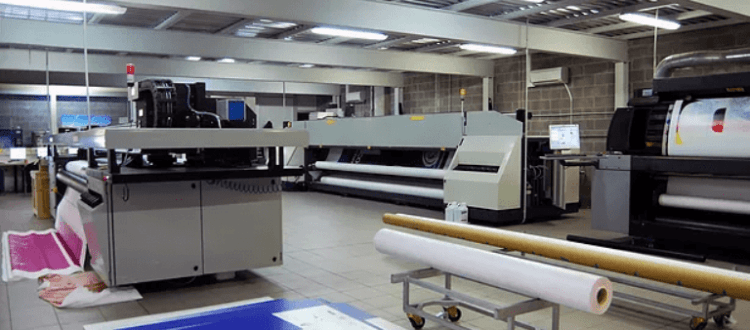One of my favorite industry topics lately has been dye-sublimation fabric printing. Of all the developments I’ve witnessed in my 20 years in the graphic advertising, this is the one that has improved the quality of advertising graphics the most.
Consider that in the past 150 years, signs went from being art – carved and hand-painted wood signs – to neon, metal, plastic, and vinyl graphics. The art aspect of the advertising sign or banner went out the window in favor of more, cheaper, and faster. Now I’m not advocating a return to the stone age. Our company was an early adopter of the vinyl plotter because we knew that if you wanted to remain in this business industry, you’d better go along to get along, or you’d be out of business.
Why Dye Sublimation Fabric Printing is Superior for Trade Shows, Displays, and POP Signs or Banners
Enter dye-sublimation fabric printing. Around the turn of the millennium, some really smart person figured out how to mingle the chemistry of dye inks with the technology of the inkjet digital printer, combine it with heat and pressure and the polymers in oil-based fabrics such as polyester and nylon, to create beautiful print. Unfortunately, I am nowhere near that smart or I’d probably be rich too! However, this gave our industry the ability to reclaim some of the artistic beauty in the banner industry.
Why dye-sublimation looks better than digital inkjet printing
Dye-sublimation features what an inkjet-to-vinyl printer cannot do, and that is a continuous tone print. When, using this printing technique elucidated above, one prints a piece of polyester fabric, the dye moves into a gaseous state and the result is a subtle blending of colors that is similar to a photograph, and fairly dissimilar to a digitally printed vinyl banner. It does not lay down a CMYK color one at a time as does an inkjet printer, so while an inkjet can create the illusion of a photographic reproduction, dye sub is photographic.
…and why you should really consider banners and displays printed as part of your marketing…
 This method of print processing is something any business that deals with high end products such as clothing, computers, fine furniture, etc., or attends any trade shows and/or conventions may want to seriously consider. While marginally more expensive than vinyl banners, a display produced with cloth printing says that you care about your product, its image, and the small details.
This method of print processing is something any business that deals with high end products such as clothing, computers, fine furniture, etc., or attends any trade shows and/or conventions may want to seriously consider. While marginally more expensive than vinyl banners, a display produced with cloth printing says that you care about your product, its image, and the small details.
Conversely, if you don’t use displays printed using this printing technology, a potential client may subconsciously view your company as skimping on details, possibly having poor client service after the sale, or maybe just not as classy as the booth up the aisle that did use fabric banners. The human subconscious mind often is swayed by the rich appearance of something, and may even include purchasing decisions based on something that has been printed using the continuous lustrous and rich tones of this method.
Consider why, for instance, a website that uses rich tones of blue and deep red will outsell an identical site using orange and black. Or why a successful website selling bridal clothing and trinkets using light and airy tones would outsell one using rich tones of blue and deep red. Dye-sublimation fabric printing, used with appropriate design elements, is far more likely to affect a potential client than good graphics on a cheap-looking substrate. Of course, your client services and products still have to be at least as good as the competition as the printed graphics won’t overcome poor service!
Popular Posts:




